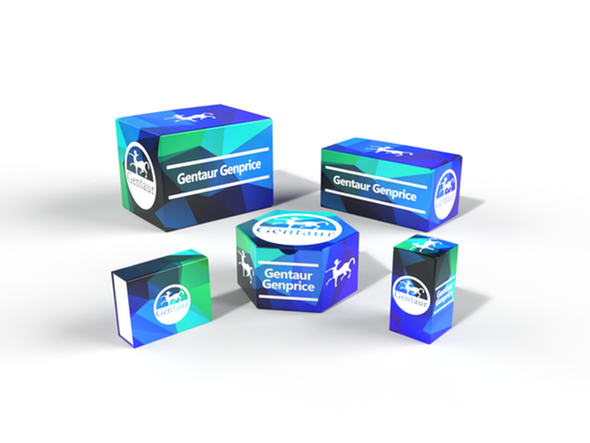740
Mouse Peroxidasin homolog (PXDN) ELISA Kit | AE24951MO
- SKU:
- 740-AE24951MO
- Availability:
- Usually ships in 5 working days
Description
Mouse Peroxidasin homolog (PXDN) ELISA Kit | AE24951MO | Gentaur UK, US & Europe Distribution
Species Reactivity: Mouse (Mus musculus)
Abbreviation: PXDN
Alternative Name: D2S448; D2S448E; KIAA0230; MG50; PRG2; PXN; VPO; p53-responsive gene 2|peroxidasin
Application: ELISA
Range: Request Information
Sensitivity: Request Information
Intra-Assay: ≤6.0%
Inter-Assay: ≤10.5%
Recovery: 1, 01
Sample Type: Serum, Plasma, Other biological fluids
Detection Method: Sandwich
Analysis Method : Quantitive
Test Principale: This assay employs a two-site sandwich ELISA to quantitate PXDN in samples. An antibody specific for PXDN has been pre-coated onto a microplate. Standards and samples are pipetted into the wells and anyPXDN present is bound by the immobilized antibody. After removing any unbound substances, a biotin-conjugated antibody specific for PXDN is added to the wells. After washing, Streptavidin conjugated Horseradish Peroxidase (HRP) is added to the wells. Following a wash to remove any unbound avidin-enzyme reagent, a substrate solution is added to the wells and color develops in proportion to the amount of PXDN bound in the initial step. The color development is stopped and the intensity of the color is measured.
Product Overview: Drosophila peroxidasin is an extracellular matrix-associated peroxidase. It is expressed exclusively in hemocytes derived from head mesoderm at a very early stage of differentiation. Peroxidasin exists as a homotrimer with a unique hybrid structure that combines an enzymatically functional peroxidase domain with motifs that are typically found in extracellular matrix-associated proteins. It is a secreted protein that contains a secretory recognition sequence at its N terminus. Peroxidasin catalyzes hydrogen peroxide-driven radioiodination, oxidations, and the formation of dityrosine in vitro. It is also thought to function in extracellular matrix consolidation, phagocytosis, and defense.
Stability: The stability of ELISA kit is determined by the loss rate of activity. The loss rate of this kit is less than 5% within the expiration date under appropriate storage condition. The loss rate was determined by accelerated thermal degradation test. Keep the kit at 37°C for 4 and 7 days, and compare O.D.values of the kit kept at 37°C with that of at recommended temperature. (referring from China Biological Products Standard, which was calculated by the Arrhenius equation. For ELISA kit, 4 days storage at 37°C can be considered as 6 months at 2 - 8°C, which means 7 days at 37°C equaling 12 months at 2 - 8°C) .










